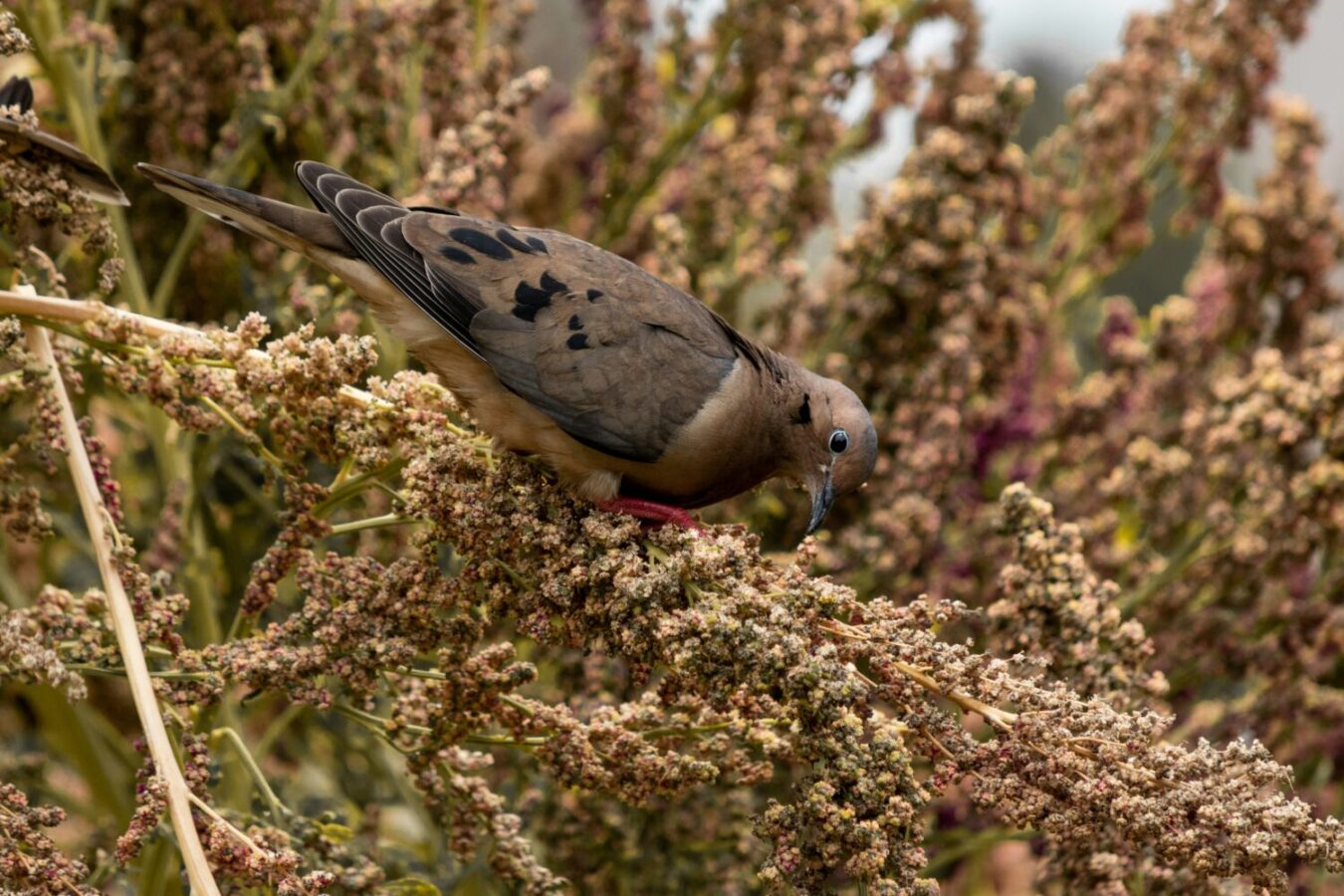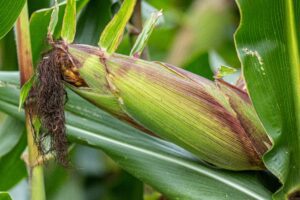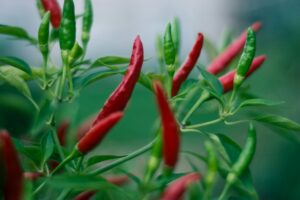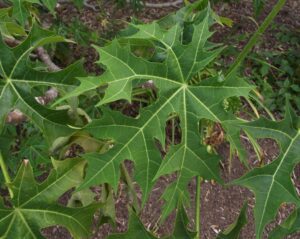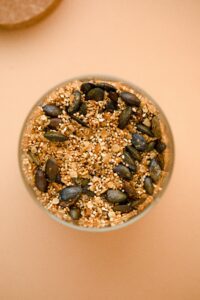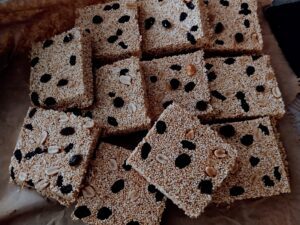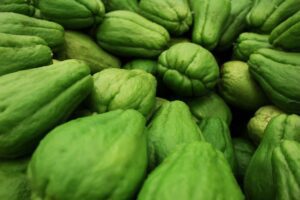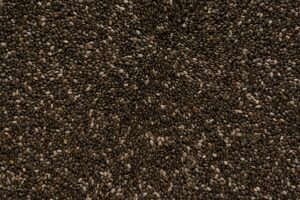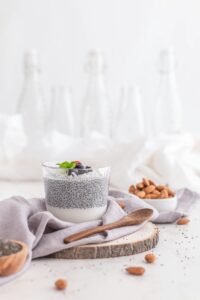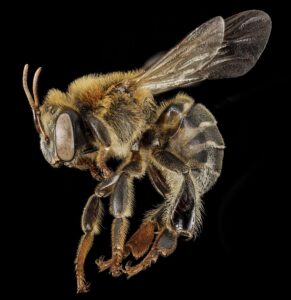Before the sixteenth century, the Original Mesoamerican civilizations were renowned for their advanced agricultural practices, using all kinds of resources from marine ingredients to plants and animals. Their food was obtained or produced through various methods, including hunting, foraging, and large-scale farming.
Wherever these ancient societies went, they took their resources with them. They even adopted various adaptive cultivation techniques, such as slash-and-burn farming, to replenish the soil with nutrients.
Their diet was built around four main crops: maize, squash, beans, and chili. These ingredients complemented each other perfectly to provide a well-rounded and nutritious diet.
Photo by Marek Studzinski
Maize (a.k.a. Corn) was fundamental to the Mesoamerican diet and had important significance in their ideology and mythology. Nixtamalized maize was usually ground on a metate and prepared into tortillas, atole, tamales, and pozole. This ancestral treasure is antioxidant-rich, a great source of fiber, and packed with essential vitamins and minerals for optimal bodily function.
In Mayan language, squash was known as “k’úum,” with each variety having its distinct name. The Mayans didn’t just eat the pulp of this fruit; they also used and ate the seeds. Squash is rich in antioxidants and vitamins A and C, making it great for maintaining healthy skin and vision. It’s also low in calories and high in fiber, which supports healthy digestion and appetite control.
Various types of beans were cultivated, including pinto, red, and black beans. These were often mashed and used as spreads on tortillas or as fillings for tamales. Today, beans continue to be a staple in numerous recipes, providing protein, carbohydrates, fiber, iron, potassium, phosphorus, and vitamins A, C, and B.
Photo by Steve Johnson
Chili peppers played a vital role in ancient Mexican cultures, extending from culinary uses to medicinal and religious purposes. They were essential in offerings to the gods. The habanero chili, originating in Yucatan, remains one of the spiciest peppers on the Scoville scale but is still a favorite for making salsas and regional dishes like chiltomate. It’s known for its healing properties, helping treat colds with its high vitamin C content, boosting the immune system, and even relieving headaches thanks to its anti-inflammatory effects.
MEXICAN SUPERFOODS
Modern Mexican communities continue to use many of the foods and production techniques from their ancient ancestors, and these superfoods have spread far beyond the country, reaching faraway places of the world. Chances are, you already consume many of these essential superfoods daily, like cacao and avocado. But, what other Mexican Superfoods are out there?
CHAYA – X’CHAY
Source Wikipedia Commons
Often referred to as “Mayan spinach,” chaya is even more nutritious than spinach or chard, offering huge benefits to the body. Chaya is packed with vitamins A and C, essential minerals, high fiber, iron, protein, calcium, potassium, and antioxidants. It’s readily available, thriving in warm, humid climates, which is likely why it was so widely consumed.
This nutritious legacy of Mayan culture was traditionally mixed with maize and pumpkin seeds to make a type of tamale but is also used in stews, soups, or tamale wrappers. A refreshing and energizing chaya leaf infusion provides an instant energy boost and stress-relieving effects.
AMARANTH – X’TES
The ancient cultivation of amaranth in the Americas is linked to the major pre-Hispanic civilizations: the Incas, Aztecs-Mexicas, and Maya. These cultures valued amaranth alongside maize and beans for its nutritional benefits. It is drought-resistant and provides vigor, making it a staple for warriors to enhance their strength.
Photo by Bakd&Raw by Karolin Baitinger
The Mexicas associated amaranth more with religious rites. Aztec women ground amaranth seeds, mixing them with honey or molasses and the blood of sacrificial victims to create a paste called tzoalli. They made statues of gods from this paste, consuming them with great reverence. Despite (or maybe because of) its similarity to the Catholic Eucharist, the Spanish considered it a perversion and banned its use.
In pre-Hispanic cuisine, amaranth was often added to maize tamales and tortillas, along with salsa or mulli, and sometimes honey. Nutritionally, amaranth is an excellent source of amino acids, vitamins A, B, C, B1, B2, and B3, folic acid, calcium, iron, phosphorus, and magnesium.
Source Wikipedia Commons
Today, the most common way to enjoy amaranth is through the popular sweet known as Alegría, which is derived from the Aztec tzoalli, minus the sacrificial ingredients, of course.
CHAYOTE
Photo by Daniel Dan
Chayote is part of the cucurbit family, along with various types of squash, cucumbers, watermelons, and melons. The word chayote comes from the Nahuatl word “hitzayotli,” meaning “spiny squash.”
Chayote was extensively cultivated in Mesoamerica by the Maya and Aztec civilizations and later spread worldwide during Spanish colonization. Beyond its culinary uses, chayote has medicinal properties and was also used in the craft of basket and hat making.
Chayote is low in calories, free from cholesterol and saturated fats, and an excellent source of dietary fiber. It also contains high levels of potassium, which helps balance sodium effects, preventing hypertension, and is also a good source of vitamins C, B9, B2, and iron.
CHIA SEEDS
Photo by Joanna Kosinska
An ancient plant whose seeds were a staple in the diet of pre-Hispanic cultures in Mexico. Legend has it that Aztec warriors could sustain their strength for up to 24 hours with just a spoonful of these seeds. The Maya word “chía” means strength, and the name of the state “Chiapas” translates to “In the river of the Chía.”
Chia seeds are among the healthiest foods on the planet, and one of the most popular superfoods worldwide, boasting high fiber content, protein, calcium, magnesium, manganese, phosphorus, zinc, antioxidants, and B vitamins. The most common way to consume chia is by mixing the seeds with water, juice, or any liquid food, but they can also be added to yogurt, or a salad, or ground and mixed with flour to make baked goods.
Photo by Maryam Sicard
Today, most of chia production is centered in municipalities in the highlands of Jalisco, and along with nopales, prickly pears, amaranth, and huauzontles, chia remains a staple in rural Mexican households.
MELIPONA BEE HONEY – XUNAAN-KAB
Source Wikipedia Commons
Endemic to Yucatán and famous for the healing properties of its honey, the Melipona bee is a stingless species cultivated by Maya people for hundreds of years. These bees were subject to tribute payments both before and after the arrival of the Spanish. The Maya honored bees with four to six ceremonies a year. Despite their stinglessness, Melipona bees “bite” threats and, like their stinged cousins, often die in defense of their colony.
Melipona bees produce honey, pollen, wax, and propolis, and play a crucial role as pollinators for crops like achiote, avocado, coffee, squash, chayote, habanero chili, mango, cucumber, watermelon, and tomato, among others. A single Melipona hive produces about 1.5 liters of honey annually, a slower process compared to European bees, which can produce up to 30 liters in a year.
Maya “sacred bee” honey is more beneficial than honey from other bees due to its medicinal properties, which help the immune system and are used to treat ailments, wounds, burns, and diseases.
Photo by Mareefe
So there you have it, foodie friends! Mexico, The Riviera Maya, and the Yucatán Peninsula have been blessed with a wide variety of superfoods that offer countless benefits for our bodies.
Enjoy exploring and savoring some of these ancient treasures and find many more at any of our Food Tours, where you may have the chance to taste refreshing coconut water or the famous dragon fruit that helps to increase their platelet counts, many varieties of salsas and so much more!!
-Healthy Abbey

